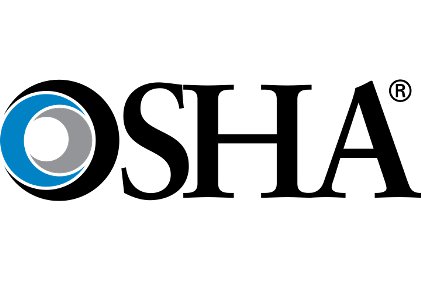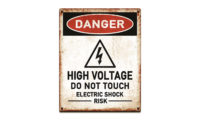 This checklist covers regulations issued by OSHA under the general industry standard 29 CFR 1910.335.
This checklist covers regulations issued by OSHA under the general industry standard 29 CFR 1910.335.
It applies to persons who are at risk of electrical shock. This checklist does not apply to qualified persons working on generation, transmission, and distribution installations; communications installations; installations in vehicles; and railway installations.
OSHA defines a qualified person as one who is familiar with the construction and operation of the equipment and the hazards involved. A person is likely to be considered "qualified" with regard to certain equipment in the workplace, but "unqualified" as to other equipment. A person who is undergoing on-the-job training and who, in the course of such training, has demonstrated an ability to perform duties safely at his or her level of training and who is under the direct supervision of a qualified person is considered to be a qualified person for those duties.
A yes answer to a question indicates that this portion of the inspection complies with the OSHA or EPA standard, or with a nonregulatory recommendation.
- Are students and employees who work in areas where electrical hazards exist provided with and required to use protective equipment that is appropriate for the body parts to be protected and the work to be performed? [29 CFR 1910.335(a)(1)(i)]
- Is the protective equipment maintained in good working condition and periodically inspected or tested? [29 CFR 1910.335(a)(1)(ii)]
- Is the insulation of protective equipment protected if it is subject to damage during use? (For example, an outer covering of leather may be used to protect rubber insulating material.) [29 CFR 1910.335(a)(1)(iii)]
- Are employees and students required to wear nonconductive head protection if head injury might occur from electric shock or burns when exposed energized parts are contacted? [29 CFR 1910.335(a)(1)(iv)]
- Are employees and students required to wear protective equipment for the eyes and face if injury might occur when electrical explosion causes electric arcs or flashes or flying objects? [29 CFR 1910.335(a)(1)(v)]
- Are employees and students required to use insulated tools or handling equipment if the tool or equipment might contact exposed energized conductors or circuit parts? [29 CFR 1910.335(a)(2)(i)]
- Note: If the insulation of tools or handling equipment is subject to damage, the insulating material shall be protected.
- Is fuse-handling equipment that is insulated from the circuit voltage required to remove or install fuses when the fuse terminals are energized? [29 CFR 1910.335(a)(2)(i)(A)]
- Are nonconductive ropes and handlines used near exposed energized parts? [29 CFR 1910.335(a)(2)(i)(B)]
- Are protective shields, protective barriers, or insulating material used to protect employees and students from shock, burns, or other injuries while they work near exposed energized parts or where dangerous electric heating or arcing might occur? [29 CFR 1910.335(a)(2)(ii)]
-
Are the following techniques used to warn employees and students about hazards (such as failure of electrical equipment) that could cause electric shock, burns, or other injury? [29 CFR 1910.335(b)]
- Safety signs, safety symbols, or tags. [29 CFR 1910.335(b)(1)]
- Barricades shall be used with safety signs to prevent or limit access to work areas where people may be exposed to uninsulated energized conductors or circuit parts. Conductive barricades may not be used where they might cause an electrical contact hazard. [29 CFR 1910.335(b)(2)]
- If signs and barricades do not provide sufficient warning and protection from electrical hazards, an attendant shall be stationed to warn and protect employees and students. [29 CFR 1910.335(b)(3)].


